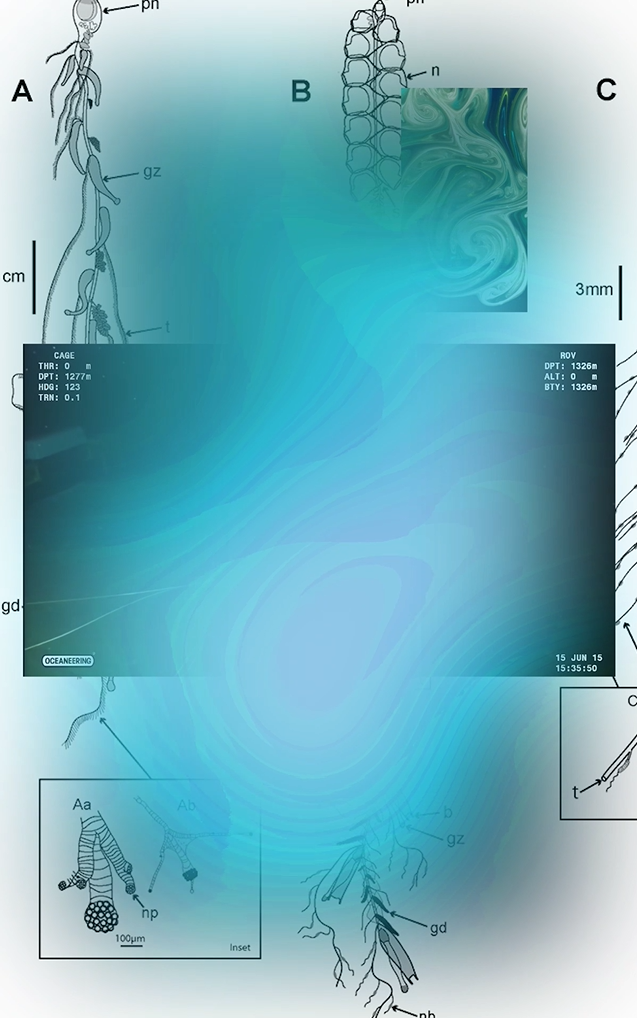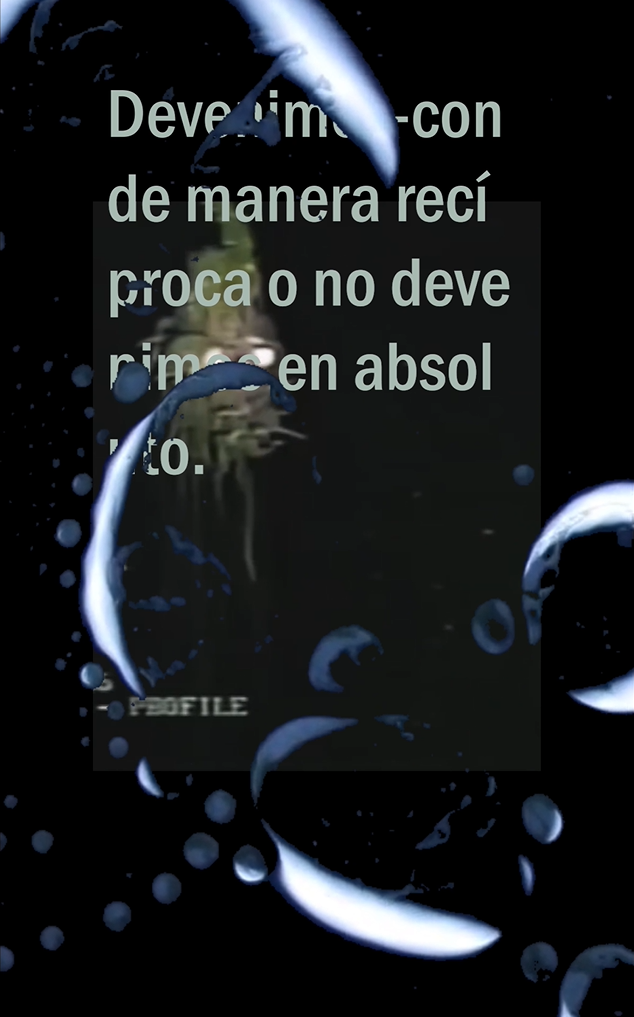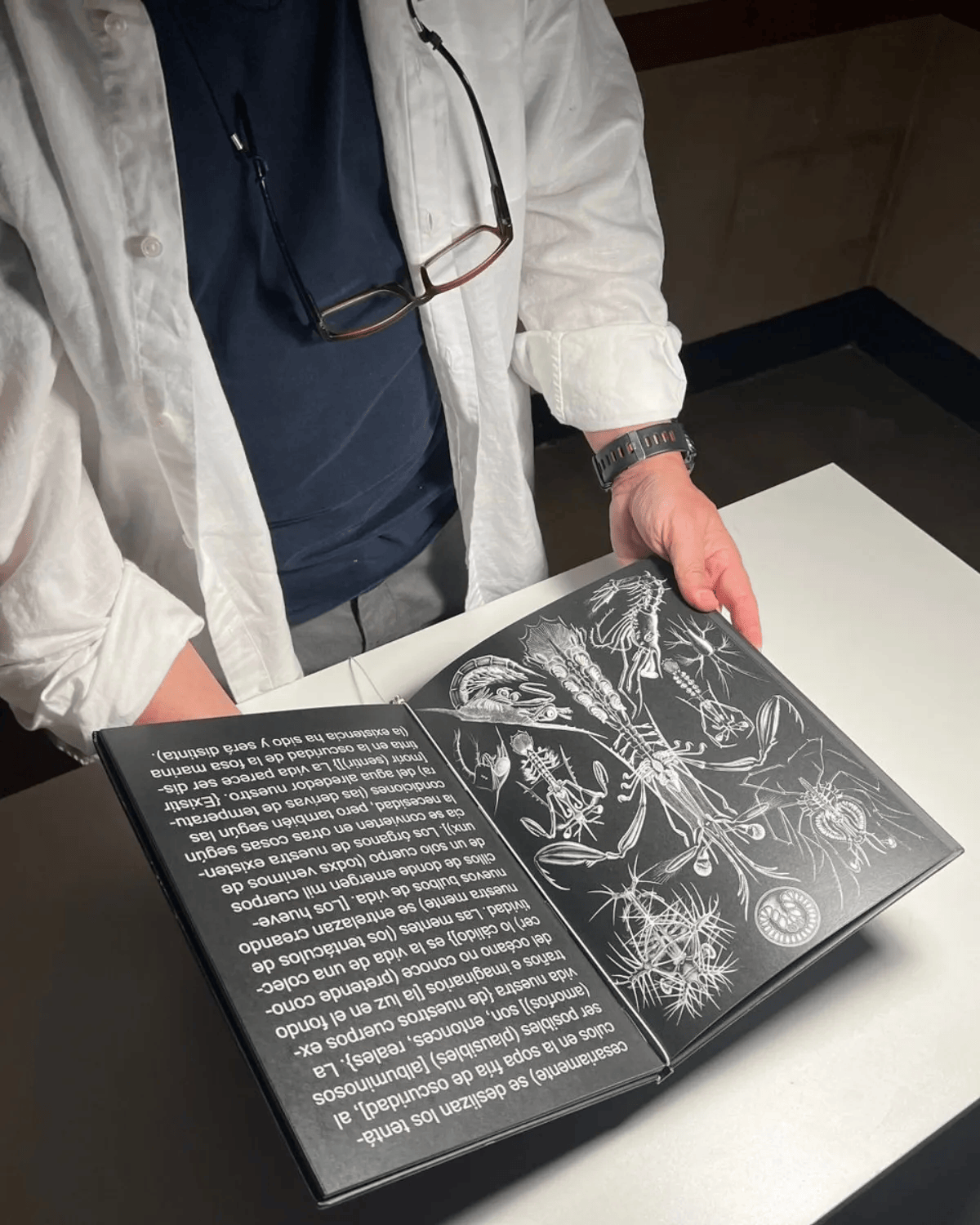Filamentos Sensitivos (2020)
Ficción escrita – Ilustración naturalista – Evolución - Biología marina – Corporeidad
Los sifonóforos son una familia de invertebrados que se encuentran en diversas profundidades marinas, siendo la especie más conocida la tóxica fragata portuguesa. Sin embargo, mi interés recae en aquellos especímenes de las profundidades poco conocidos que forman grandes colonias de múltiples entidades cohabitando entre ellas. El sifonóforo no es una estructura integrada animal, sino que son espacios colaborativos de diversos cuerpos con propiedades y agencias mutables. Entre vejigas flotantes con gas, campanas natatorias y largos filamentos sensitivos irritantes, la medusa se desplaza a merced del negro gélido de la fosa marina. Entender una entidad colectiva con una distribución en su agencia (tanto para alimentarse, articularse y desplazarse) similar a una constelación de cuerpos me resulta urgente. A través de la escritura ficticia donde se puede especular la voz de aquellxs fuera del lenguaje y la episteme clásica, me interesa que el sifonóforo dialogue con uno de sus principales colaboradores en el intento de su propia representación. Ernst Haeckel fue un científico prusiano pro-darwinista activo en la segunda mitad del siglo XIX que realizó un archivo de representaciones de sifonóforos en litografía. La colección permite imaginar la relación entre la estética, la taxonomía, el fetiche y la resistencia al conocimiento. Esta articulación cuádruple tal vez permita proceder a un texto donde este dialogo entre el sujeto y el objeto de representación-mirada es conflictivo e imperfecto. El sifonóforo escapa de la mirada ilustrada para penetrar la estética especulativa y resiste ser definido enciclopédicamente en el siglo XIX, momento crucial para la expansión colonial y científica.
En.
Siphonophores are a family of invertebrates found in various marine depths, their most well-known species being the toxic Man’o’war. However, I´m interested in those little-known specimens from the depths that form large colonies of multiple entities cohabiting with each other. The siphonophore is not an integrated animal structure, but it is rather collaborative spaces of various bodies with mutable properties and agencies. Composed by floating bladders with gas, swimming bells and long irritating sensitive filaments, the jellyfish moves at the mercy of the icy black sea grave. Understanding a collective entity with a distribution in its agency (both to feed, articulate and move in less capacity) similar to a constellation of bodies is urgent for me. Through fictitious writing where the voice of those outside the language and the classic episteme can be speculated, I wonder if the siphonophore can dialogue with one of its main collaborators in the attempt of its representation. Ernst Haeckel was a Prussian pro-Darwinian scientist active in the second half of the 19th century who made an archive of representations of siphonophores in lithography. The collection allows us to imagine the relationship between aesthetics, taxonomy, fetish and resistance to knowledge. This quadruple articulation perhaps allows us to proceed to a text where this dialogue between the subject and the object of representation-gaze is conflictive and imperfect. The siphonophore escapes the enlightened gaze to penetrate speculative aesthetics and resists being encyclopedically defined in the 19th century, a crucial moment for scientific and colonial expansion.









